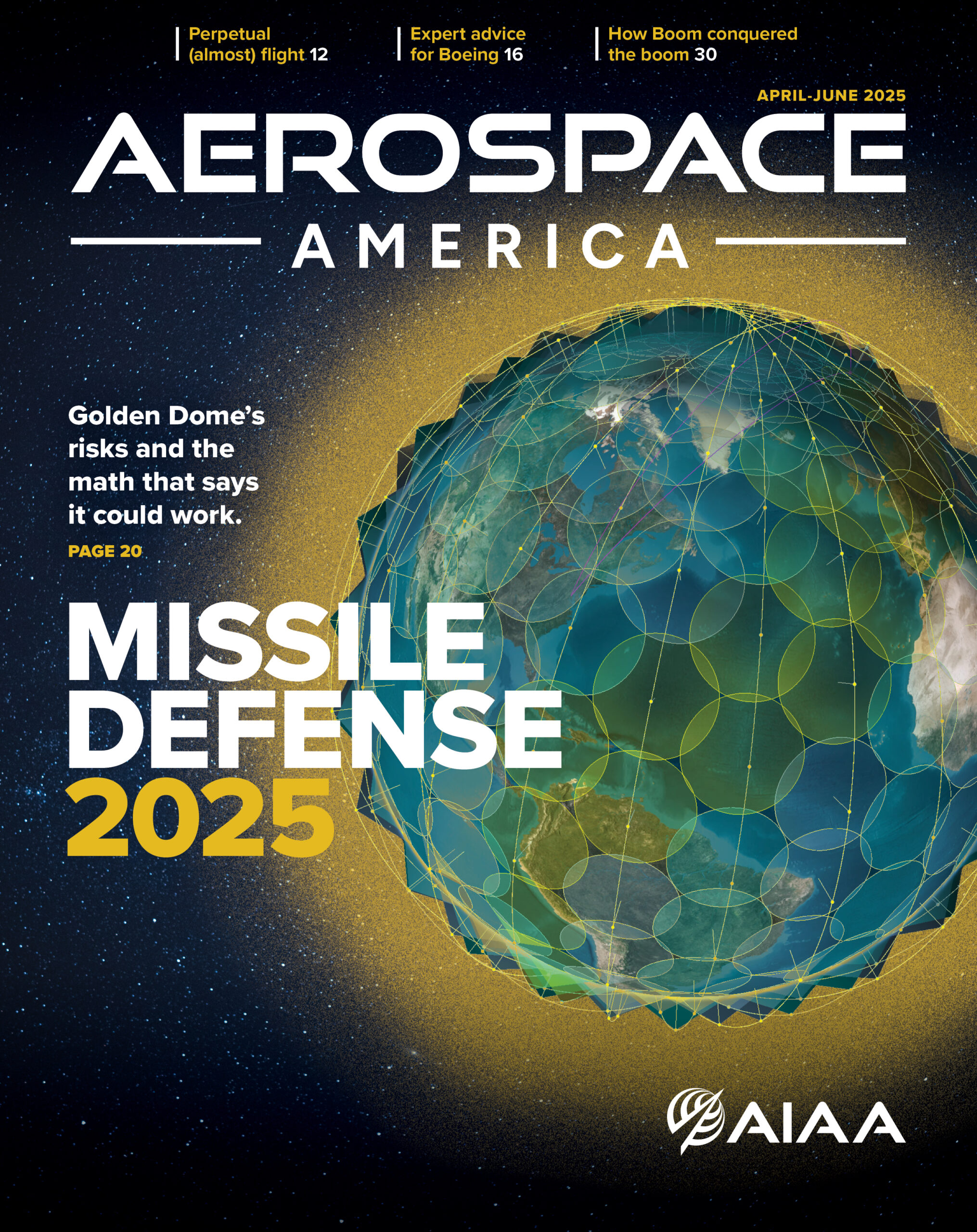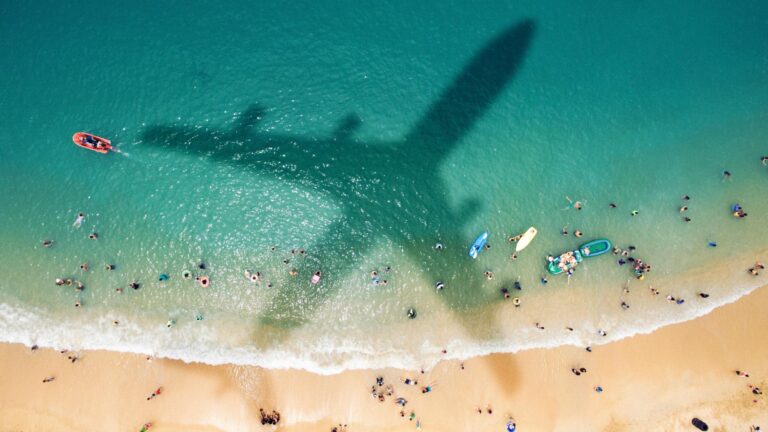Stay Up to Date
Submit your email address to receive the latest industry and Aerospace America news.

AIAA Announces 2025 Election Results
AIAA has announced the results of its recent 2025 elections. The newly elected AIAA officials will take office in May.
AIAA President-Elect
Dana “Keoki” Jackson, The MITRE Corporation
Integration and Outreach Activities Division
Director–Aerospace Outreach Group: Sofia Russi, Denmar Technical Services
Director–Integration Group: Abdollah Khodadoust, The Boeing Company
Director-Elect–Young Professionals Group: Nathan Crane, Advanced Development Programs,
Lockheed Martin Aeronautics
Regional Engagement Activities Division
Director–Region IV: Ellen Gillespie, Jacobs Engineering
Director–Region V: James Guglielmo, Boeing Defense, Space & Security
Technical Activities Division
Director–Information Systems: Michel Ingham, NASA Jet Propulsion Laboratory
Director–Propulsion & Energy: Rusty Powell, Axient
Introducing the New Board of Trustees and Council of Directors Members
In January the Board of Trustees elected new Members–At-Large who will begin three-year terms in May.
Michael Gazarik, University of Colorado Boulder
Tina Ghataore, Aerospacelab
Jill Marlowe, Retired
Ben Linder, Boeing Commercial Airplanes, also was elected to fulfill an unexpired term.
Also in January, the Council of Directors elected Jeanette Domber, BAE Systems, as Integration and Outreach Division Chief. She will begin her three-year term in May.
Get to Know Our New Board and Council Members
Board of Trustees Members–At-Large
Michael Gazarik, University of Colorado Boulder
Gazarik currently serves as the Faculty Director of the Engineering Management Program for the College of Engineering and Applied Science at the University of Colorado. He is also a part-time Staff Member at Johns Hopkins Applied Physics Laboratory. He led the creation of the Space Technology Mission Directorate at NASA and served as the first Associate Administrator championing NASA’s rapid development and incorporation of transformative technologies. Joining Ball Aerospace in 2015, Gazarik served over 8 years as the Vice President of Engineering providing overall strategic and operational leadership of engineering, program execution, and technology. Earlier in his career, he served as the acting director of the Engineering Directorate at NASA Langley Research Center and led programs developing an infrared camera for on-orbit shuttle inspections and entry, descent and landing instrumentation for the Curiosity and Perseverance Mars missions. Prior to joining NASA, Gazarik served as project manager for the Geosynchronous Imaging Fourier Transform Spectrometer project at MIT Lincoln Laboratory. He worked in the private sector on software and firmware development. Gazarik understands that diverse teams develop better solutions. Under his leadership, engineering at Ball Aerospace saw a marked increase in diversity at all levels of the organization. Gazarik earned a B.S. in Electrical Engineering from the University of Pittsburgh (1987). He earned an M.S. and a Ph.D. in electrical engineering from Georgia Institute of Technology in 1989 and 1997, respectively. He is an AIAA Fellow and former Chair of the AIAA Corporate Strategic Committee.
Tina Ghataore, Aerospacelab
Ghataore joined Aerospacelab in 2023 as Group Chief Strategy and Revenue Officer, and CEO of Aerospacelab’s new North American branch. Prior to this, she served as Chief Commercial Officer of Mynaric and President of Mynaric USA where she led the company’s efforts to position Mynaric as the preferred laser communication provider for aerospace application for government and commercial markets. In 2022, Ghataore’s contribution to the aerospace industry was recognized by both the public and industry peers alike when she was voted Via Satellite’s “Satellite Executive of the Year.” Before Mynaric, she was the Executive Vice President of Inflight Connectivity Solutions at Yahsat, where she was responsible for the overall strategy and execution of enabling the organization to launch into the Mobility Satcom Services business. In 2007, she founded The EKKAM Group, a strategic management consulting firm focused on serving clients in the aerospace/aviation and telecom industries. Ghataore held multiple leadership roles at Panasonic Avionics Corporation, where she was instrumental in efforts to launch the Panasonics Global Communications Services business. She also was charged to establish the strategy and grow the software, applications, and media business, serving the In-Flight Entertainment and Communications industry. Ghataore began her career at The Boeing Company’s Satellite Systems business unit. Ghataore received her Bachelor of Honors Degree in Aerospace Engineering from Kingston University in the U.K. She is also a graduate of the International Space University.
Jill Marlowe, Retired
Marlowe retired in December 2024 as the NASA Digital Transformation Officer, where she led the agency to conceive, architect, and accelerate enterprise digital solutions that transform NASA’s work, workforce and workplace to achieve bolder missions faster and more affordably than ever before. In this role, she defined NASA’s digital transformation vision, strategy, policies, and partnerships to accelerate NASA’s transformation progress in four target areas: engineering, scientific discovery, program/project management decision making, and business operations. Previously, Marlowe was the Associate Center Director, Technical, at NASA Langley Research Center. In this role, she focused on accelerating Langley’s internal and external collaborations as well infusing digital technologies critical for a modern federal laboratory to thrive in a digitally-enabled, hyper-connected, fast-paced, and globally-competitive world. In 2008, Marlowe was selected to the Senior Executive Service as the Deputy Director for Engineering at NASA Langley and went on to serve as the center’s Engineering Director and Research Director. She began her NASA career in 1990 as a structural analyst developing space flight instruments to characterize Earth’s atmosphere. Marlowe earned a B.S. in Aerospace and Ocean Engineering from Virginia Tech, an M.S. in Mechanical Engineering from Rensselaer Polytechnic Institute, and a Degree of Engineer in Civil and Environmental Engineering at George Washington University. Marlowe is an AIAA Fellow, and has received a Meritorious Presidential Rank Award, two NASA Outstanding Leadership Medals, election to the Virginia Tech Academy of Aerospace & Ocean Engineering Excellence and being voted the 2017 NASA Champion of Innovation.
Ben Linder, Boeing Commercial Airplanes
Linder is Vice President, 777 Chief Project Engineer (CPE) within Boeing Commercial Airplanes (BCA). He is responsible for overall product integrity and safety of 777 airplanes. He manages design requirements, authorizes design changes and airplane configurations, and assures design quality and regulatory compliance. Previously, Linder held leadership positions as 777/777X Director of Engineering, Director of Propulsion Systems Engineering, Director of Flight Sciences, 777 Fleet Support Chief Engineer, Chief Engineer of Aerodynamic Characteristics and Flight Performance, 777 Safety, Certification and Performance Senior Manager, and Everett (747/767/777) Airplane Safety Engineering manager. Linder joined Boeing as an Aerodynamics Engineer where he enjoyed assignments ranging from product development, sales support, flight test, certification, and fleet support. He received his Bachelor of Science in Aeronautical and Astronautical Engineering from Purdue University, his Master of Science in Aeronautics and Astronautics Engineering from the University of Washington, and his Master of Business Administration from Seattle University. He is involved with AIAA, American Society for Engineering Education (ASEE), and formerly with Snohomish County Science, Technology, Engineering and Math (STEM) Executive Board. Linder enjoys continuous learning in the areas of aviation, international business, and engineering.
Integration and Outreach Division Chief
Jeanette Domber, BAE Systems
Domber is a Technical Fellow in the Payload Systems Engineering group in the Space and Mission Systems sector of BAE Systems, Inc. (formerly Ball Aerospace). She has over 25 years of experience in space systems and currently works as an advanced systems manager for national space early architecture development. Previously, Domber was the astrophysics mission area lead for BAE Systems’ Civil Space business unit. She has served as the deputy program manager for Ball’s efforts on the Wide Field Instrument for the Nancy Grace Roman Space Telescope, the payload manager for the Imaging X-ray Polarimetry Explorer (IXPE) Phase A study, and the program manager for the Membrane Optic Imager Real-Time Exploitation (MOIRE) program, and was the Ball lead for the STIS repair undertaken during Hubble Servicing Mission 4. Domber is a lifetime member of AIAA, having joined in undergrad. Her many AIAA volunteer leadership positions include Technical Activities Division (TAD) Aerospace Design and Structures Group (ADSG) Director; TAD ADSG Deputy Director for Forums, Structures; Structures Technical Committee (TC) Chair, Vice Chair, Procedures Subcommittee Chair; SciTech ADSG Technical Forum Chair; Structures, Structural Dynamics, & Materials (SDM) Structures Technical Chair; and JSR Associate Editor. She received an AIAA Sustained Service Award in 2021. Domber holds a B.S. in Aerospace Engineering from Case Western Reserve University. Her M.S. and Ph.D. are from the University of Colorado Boulder in Aerospace Engineering Sciences. Domber is an AIAA Fellow, a former member of the Structures Technical Discipline Team for the NASA Engineering & Safety Center, a Fellow of SPIE, a member of the American Astronomical Society, and attended the National Academy of Engineering’s invited Frontiers of Engineering Symposium.
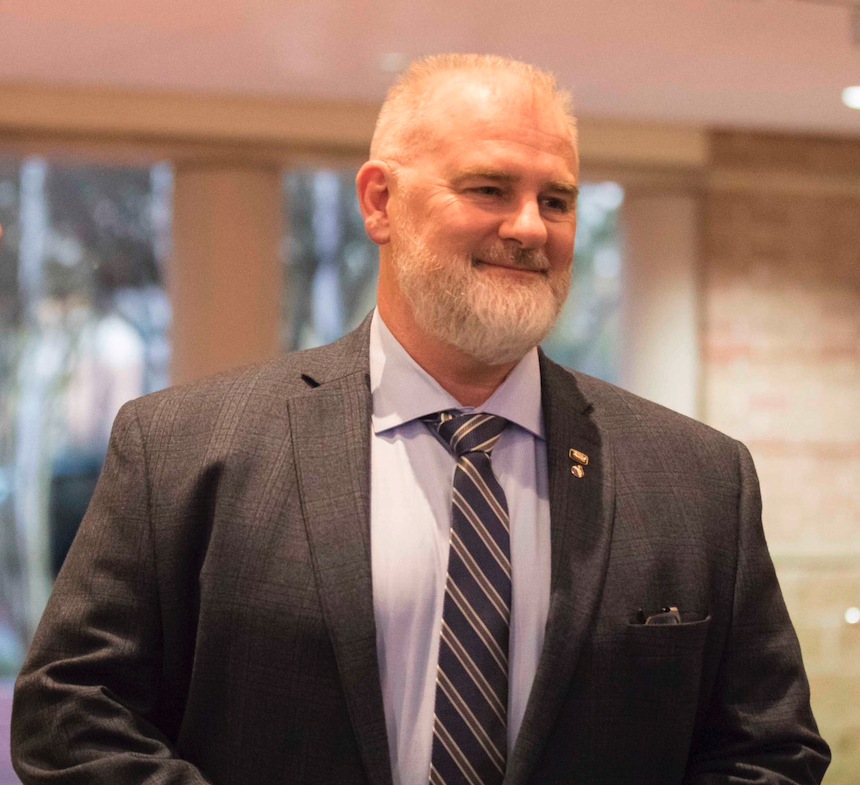
ASCENDxTexas Helps Navigate the Evolving Space Economy
Winners of 2025 Trailblazing STEM Educator Award Announced
Challenger Center and AIAA have announced Kelsy Achtenberg, Allan Miller, and Kevin L. Simmons as the winners of the 2025 Trailblazing STEM Educator Award. Each teacher and their respective schools will be awarded $5,000. Additionally, each teacher will receive free access to Challenger Center STEM programming, a trip to Washington, D.C., to be honored at the 2025 AIAA Awards Gala (30 April), and an invitation to attend a future space launch experience and VIP tour.
I
n its fourth year, the award celebrates K-12 teachers who go above and beyond to inspire the next generation of explorers and innovators. The three winners come from schools across the United States and were selected from a competitive pool of nominations. The nominations demonstrate the remarkable efforts teachers make every day to empower underserved and underrepresented students in STEM while using unique strategies, tools, and lessons in and out of the classroom to further energize students.
Each winner can select from Challenger Center’s suite of hands-on, simulated learning experiences based on their classes’ needs: Center Missions, delivered at Challenger Learning Centers around the globe; and Virtual Missions, delivered by Challenger Learning Center Flight Directors to students in and out of the classroom.
Meet The 2025 Trailblazing STEM Educator Award Winners!
Kelsy Achtenberg, STEM coordinator, math lead, and Dean of Students
at The Innovation School, Bismarck, North Dakota
With 13 years of teaching experience, Kelsy has spent the past eight focused on STEM education. During this time, she guided The Innovation School to become a Yass Prize quarterfinalist, a VELA grant recipient, and a Canopy Project school. Her excellence in teaching has earned nominations for Junior Achievement Teacher of the Year, LifeChanger of the Year, Chamber of Commerce Teacher of the Year, and the prestigious Presidential Awards for Excellence in Mathematics and Science Teaching. Holding a Master of Education in Curriculum, Instruction, and Assessment, she crafts innovative, hands-on, project-based lessons. Her commitment to inclusivity in STEM shines through many of her initiatives, including a school makerspace designed specifically for students with dyslexia.
Allan Miller, Applied STEM and Design Technology teacher at Williston Central School, Williston, Vermont
A distinguished educator with 40 years of experience, Allan currently guides 3rd-8th graders through project-based experiences focusing on hands-on STEM activities. He spent 25 years teaching in Alaska, beginning at a Tlingit community school in Yakutat. Now a NASA Solar System Ambassador, Allan has been a Mercury Messenger Fellow and Explorer School Project Leader, and helped establish the Educator Astronaut Teacher corps. His career extends beyond the classroom: as a 1989 Reagan/Gorbachev Fellow, he taught in a Soviet school; as a 2007 Einstein Distinguished Educator Fellow, he coordinated international projects for the National Science Foundation; and as a 2020 Fulbright Distinguished Educator Fellow, he trained over 500 Uzbekistan teachers on STEM education best practices. In 2023 and 2025, he led a Fulbright project in Nha Trang, Vietnam, training faculty and students at a teacher’s college on building problem-solving skills through STEM. His awards include the 2005 Alaska Challenger Center Teacher of the Year, 2008 NSTA Mohling Aerospace Educator Award, and 2013 UVM Tarrant Foundation Educational Leadership Award; he is a 2022 Vermont nominee for the Presidential Award for Excellence in Science and Mathematics.
Kevin L. Simmons, founder of the Wolfpack CubeSat Development Team (WCDT) and Aerospace and Innovation Academy, Palm Beach Gardens, Florida
Kevin brings 21 years of educator experience to engage middle and high school students in aerospace and STEM education. His WCDT program empowers students aged 10–18 to design, build, and launch CubeSats—two have already flown, with a third set for 2025 via Firefly Aerospace’s DREAM 2.0. Under his leadership, WCDT students have produced over 110 technical papers and presented at major conferences such as the International Astronautical Congress and SmallSat. Kevin also works with his team to create educational resources—such as children’s books and podcasts— to make space science accessible to a wider audience. His accolades include induction into the Space Worker Hall of Fame and the AIAA Educator Achievement Award, and he co-found the annual SmallSat Education Conference at NASA Kennedy Space Center. Kevin also is an advocate, mentoring students who have participated in AIAA Congressional Visits Day and Florida Space Day, helping them learn how to advocate for accessible STEM policies and connect with leaders.
Transatlantic Space Initiative Announced Between Texas and France
Transatlantic Space Initiative Announced Between Texas and France
Texas-based Rice University, Stellar Access, and Houston Spaceport announced their new transatlantic space initiative with France’s space agency CNES and Business France. They are aiming to help emerging French companies connect with industry leaders and essential resources, paving the way for their expansion into Texas and the United States while driving economic growth and innovation.
“By leveraging the strength of Texas and France, we are fostering an environment where innovation thrives and commercial space activities can flourish,” said David Alexander, professor of physics and astronomy at Rice, director of the Rice Space Institute (RSI), and a Texas Aerospace Research and Space Economy Consortium member.
Read more: Texas-France space hub aims to innovate space commerce and research [https://news.rice.edu/news/2025/texas-france-space-hub-aims-innovate-space-commerce-and-research; QR code can be used here]
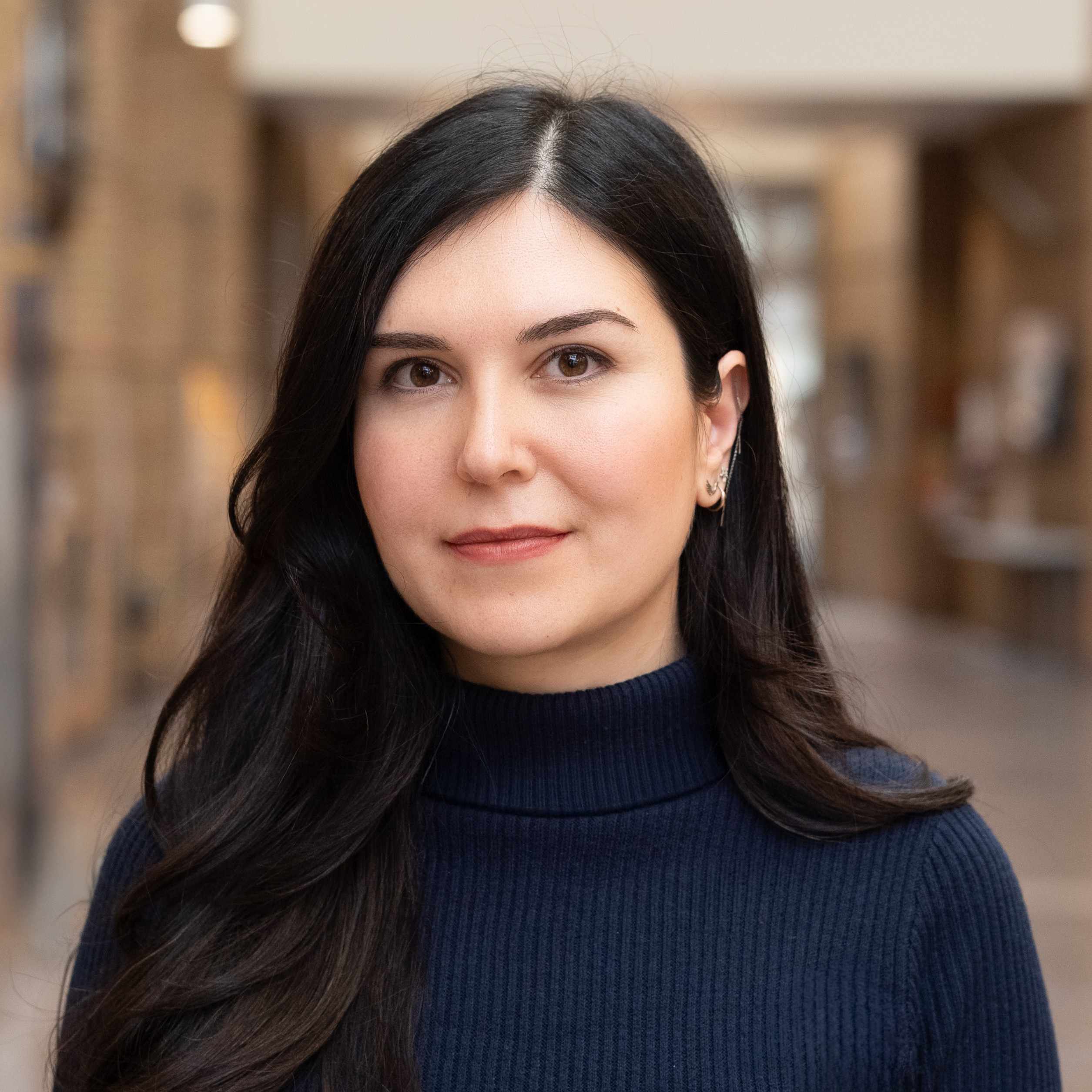
2025 Sperry Award Winner Honored for Pioneering Research in Electrified Aircraft Systems
2025 Sperry Award Winner Honored for Pioneering Research in Electrified Aircraft Systems
Lawrence Sperry Award
Each year, AIAA presents the Lawrence Sperry Award to recognize a notable contribution made by a young professional, age 35 or under, to the advancement of aeronautics or astronautics. AIAA Senior Member Gökçin Çınar has been honored “for pioneering research and innovative contributions to electrified aircraft systems and sustainable aviation.”
As noted in her award nomination, Çınar, an Assistant Professor of Aerospace Engineering at the University of Michigan, stands as a beacon of innovation and commitment in the realm of sustainable aviation and electrified aircraft propulsion. Her Ph.D. thesis is one of the inaugural works devoted to formulating a comprehensive methodology for hybrid-electric aircraft systems design and optimization. She has made significant contributions to the integration of energy management optimization for hybrid propulsion systems at the aircraft design stage that carved a distinctive niche in the academic and professional sphere. In addition, Çınar’s innovative approach led to the creation of a unique co-design and optimization framework for aircraft sizing under diverse power management strategies, maximizing the environmental advantages of hybrid-electric aircraft.
A Fascination with Flight and Computers Led
Her to Aerospace
Çınar has always been fascinated by how things work. “My dad and both grandfathers could build or fix anything, and I grew up watching them work on DIY projects. By the time I was four, I had my own little hammer and built my first airplane—two wooden sticks nailed together for the body and wings, with an old drawer pull acting as a propeller. I developed an obsession with flight; I’d watch airplanes and wonder why they looked the way they did and how they stayed in the air. There was something magical about flying. And that sense of curiosity and fascination never went away.”
Her fascination with computers also began at a young age when she began coding, experimenting with simple programs, and figuring out how computers could simulate, calculate, and solve problems that seemed impossible by hand. That passion continued to grow.
Çınar scored high enough on the national college entrance exam to choose any field of study. She noted, “aerospace engineering wasn’t a common choice at the time, and people thought I was making a mistake by selecting it—back then, nothing major was happening in aerospace in Türkiye. But I had no doubts.” Her choice, Middle East Technical University (METU), had a very strong aerospace program, and allowed her to work on cutting-edge aviation challenges. She added, “the field has since exploded in Türkiye, and aerospace engineering is now one of the most sought-after disciplines.”
Çınar chose an academic research internship early on. “My cousin, who was doing a Ph.D. in physics at the time, encouraged me to apply to the Radio and Plasma Wave Group at the University of Iowa, led by the late Prof. Donald A. Gurnett. I spent the summer analyzing whistler mode emissions in Saturn’s magnetosphere using data from the Cassini spacecraft. It was my first exposure to research methodologies and data processing, and I realized I loved tackling open-ended problems.” She later interned at Turkish Aerospace Industries, where she developed an aircraft design tool for UAVs.
She had an amazing opportunity as a freshman to join the METU Paragliding Society and learn solo paragliding, deepening her appreciation for flight. Çınar also participated in student design competitions, such as AIAA Design/Build/Fly in her junior year. In her senior year, she led the METU group in a joint METU-Georgia Tech team for the AHS/Industry Student Design Competition, where they designed a Rotary Wing Pylon Racer and won first place. “That experience, combined with my growing interest in aircraft design, led me to Georgia Tech’s Aerospace Systems Design Laboratory (ASDL) for my graduate studies.”
Rethinking the Traditional and Exploring Unconventional Propulsion Architectures
NASA programs have played a major role in shaping Çınar’s research career. While pursuing her M.S. in Aerospace Engineering, she worked on the NASA Environmentally Responsible Aviation (ERA) project, which focused on developing integrated technologies to improve efficiency and reduce noise for future air vehicles. She said, “My contributions were in fleet-level analyses, evaluating how novel technologies could impact aviation at a broader operational scale. While electrification wasn’t a focus at the time, this project sparked my interest in rethinking traditional design trade-offs and exploring how unconventional propulsion architectures could unlock new levels of efficiency and performance.”
By the time she started her Ph.D. at Georgia Tech, electrified aircraft propulsion was still a niche topic in aerospace. She turned to electric vehicle (EV) research to build a foundation in component modeling and powertrain optimization. Çınar’s dissertation was one of the first (if not the first) to develop a comprehensive methodology for electrified propulsion aircraft sizing and synthesis, introducing a propulsion-system-agnostic aircraft design and optimization framework. In addition, a major outcome of her Ph.D. was the computational aircraft design software she developed, which became a key enabler for system-level design and assessment of electrified aircraft. “This tool allowed us to analyze novel propulsion architectures, optimize their performance, and integrate power and energy management strategies into the aircraft design process—a crucial factor for hybrid systems. I feel fortunate to have worked on the right problem at the right time, creating methodologies that have since been widely adopted in our research community.”
After completing her Ph.D., she worked as a Research Engineer at ASDL, leading research groups focused on electrified aviation. Electrification became a major research priority in aerospace, and Çınar became involved early in the NASA Electrified Powertrain Flight Demonstration (EPFD) project. “Contributing to this landmark initiative has been a defining moment in my career, and I’m fortunate to be continuing this work now at Michigan,” leading the IDEAS Lab, where computational methods for future aircraft design and system-level optimization, combining physics-based modeling, data-driven approaches, and systems engineering, are developed. As part of the project, the lab developed FAST (Future Aircraft Sizing Tool), an open-source, multi-fidelity framework that enables users—from students to industry professionals—to explore and design novel aircraft. Çınar noted, “By making FAST open-source, we aimed to lower the barrier to entry for aircraft design and foster broader engagement in the field. While FAST provides a strong foundation for early-stage design and analysis, our lab also develops more sophisticated, high-fidelity methods for detailed system modeling and optimization. Building on this open-science initiative, we have since released FAST AEROBASE, a comprehensive aircraft and engine database, along with regression models to enhance predictive capabilities.”
Çınar’s team recently was selected for NASA’s AACES 2050 initiative, a multidisciplinary effort focused on evaluating next-generation aircraft configurations. Collaborating with Electra.aero and other industry and academic partners, they assess future aircraft concepts, propulsion architectures, and operational strategies for mid-century commercial aviation. “Being part of this initiative allows us to apply our expertise in system-level design and optimization, ensuring that emerging propulsion technologies and novel configurations are evaluated with a holistic, fleet-level perspective.”
Aviation at a Turning Point
“For decades, aircraft design has advanced through incremental improvements, but now, emerging technologies are redefining what’s possible. These breakthroughs aren’t just about improving efficiency—they’re expanding the design space and unlocking new levels of performance that were previously out of reach,” expressed Çınar. “With innovations in propulsion, airframe design, and computational tools, we can now optimize aircraft beyond traditional trade-offs, leading to higher efficiency, greater operational flexibility, and enhanced overall capability.”
She is most excited about how computational methods are evolving to match this complexity. “As aircraft architectures become more advanced—whether through electrification or other novel propulsion concepts—traditional design approaches alone aren’t enough. We need more sophisticated modeling, optimization, and simulation techniques to fully understand system-level trade-offs and push the boundaries of performance.”
She also noted, “At the core of all this is systems thinking. New technologies don’t exist in isolation—their real impact depends on how they interact across an entire aircraft system. That’s why a key focus of my work is developing computational methods that incorporate systems-level insights to solve complex design challenges. I’m working on a range of future aircraft technologies, exploring how novel propulsion concepts, subsystem-level solutions, and unconventional configurations can be integrated into next-generation designs. By developing new frameworks and methodologies, I aim to quantify trade-offs, assess emerging technologies in a system-wide context, and optimize aircraft design across multiple dimensions. It’s an exciting challenge, and I look forward to seeing how these advancements shape the future of aviation.”
Gaining Valuable Insights from Mentors
Çınar’s career has been shaped by many mentors and collaborators. “At ASDL, I had the privilege of collaborating with brilliant researchers, gaining valuable insights and perspectives. My Ph.D. advisor and mentor, Dr. Dimitri Mavris, had a profound impact on me. He runs one of the most influential aerospace research programs in academia, and I was lucky to have his support throughout and after my Ph.D. I learned a great deal from him about hard work, resilience, and compassion—qualities that continue to shape my approach to my work.”
She added, “NASA Aeronautics also had a major impact on my research journey. I’m grateful for the many projects I’ve worked on that were funded by NASA and for the people I’ve collaborated with along the way. These opportunities not only allowed me to contribute to high-impact research, but they also broadened my vision of what’s possible in aerospace. Gaudy Bezos-O’Connor has been an outstanding leader in the EPFD Project, and I’ve learned a great deal from working with her. Another great collaborator from EPFD is Ralph Jansen, who stands out as one of the most technically impressive engineers I’ve had the chance to work with.”
“Dr. Susan Ying’s mentorship has been invaluable since the early days of my career—I’m inspired not only by her career path but also by her generosity in sharing her experiences with me. Looking back even further, Dr. Ilkay Yavrucuk and my cousin, Dr. Tuna Yıldırım, played a pivotal role in encouraging me to pursue my Ph.D. at Michigan; Dr. Joaquim Martins has been an incredible colleague and mentor. He is a globally recognized leader in his field, yet remains humble and generous with his guidance—something I deeply admire.”
She expressed there were many others who have influenced her career, and that she’s had the privilege of working with outstanding colleagues across industry, government, and top institutions, as well as mentoring talented Ph.D. students at Georgia Tech and Michigan. “This recognition reflects our shared commitment to innovation and collaboration.” Çınar also acknowledged her family as her greatest source of support and inspiration. “Their unwavering encouragement has played a huge role in my journey, and I’m incredibly grateful for their belief in me every step of the way.”
AIAA Facilitates Connections and Broadens Perspectives and Impacts
Çınar became an AIAA member as a graduate student in 2012, recognizing the Institute as a cornerstone for aerospace research and professional development. “Over the years, AIAA has been instrumental in facilitating connections with academia, industry, and governmental bodies.”
She noted, “My involvement with AIAA has played a major role in my career. I became involved in technical committee work during the final year of my Ph.D., joining the Aircraft Electric Propulsion and Power Working Group in 2018. That group evolved into the Electrified Aircraft Technology Technical Committee (EATTC) in 2020, and I’ve been actively involved since its founding, including servicing as TC chair. I initially served as the Publications and Policy Subcommittee Chair, working with colleagues to produce Year in Review articles and contribute to AIAA’s knowledge-sharing efforts.” She is proud of the EATTC’s activities, organizing technical sessions at AIAA forums and bringing together experts from industry, academia, and government to discuss the future of electrified aviation.
Çınar has also been deeply involved in the AIAA/IEEE Electric Aircraft Technologies Symposium (EATS) since 2018, and it has become the go-to event for those working in electrified aviation, connecting aerospace and electrical engineers to exchange insights and tackle the challenges of electrified aircraft systems.
She concluded, “AIAA has broadened my network, my perspective, and my impact. Through my work in technical committees, conferences, and working groups, I’ve had the opportunity to collaborate with leading researchers, engineers, and decision makers who are shaping the future of aerospace. It’s been a privilege to contribute, and I look forward to continuing to engage with the AIAA community.”
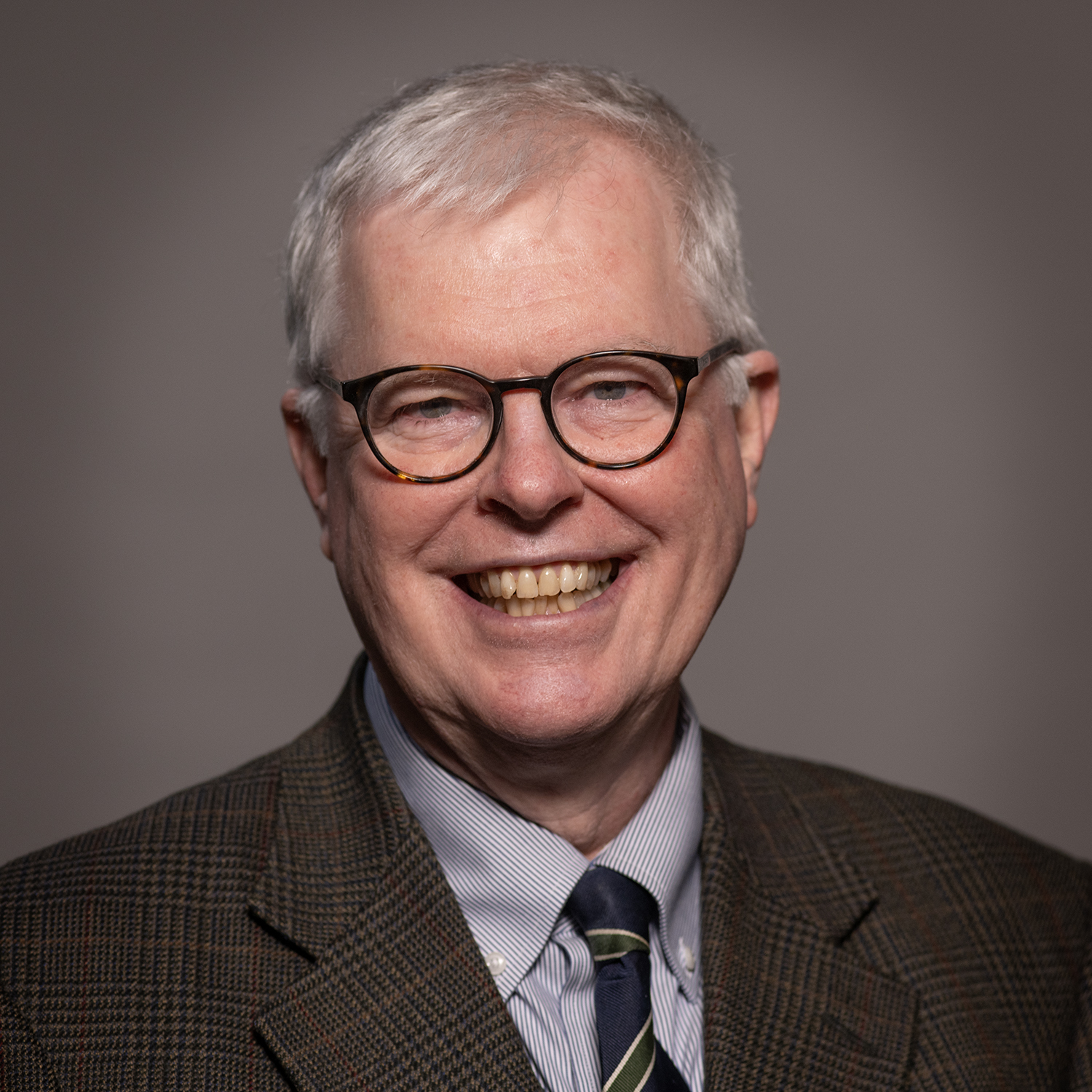
Spotlight on the 2025 AIAA Pendray Aerospace Literature Award Winner
Spotlight on the 2025 AIAA Pendray Aerospace Literature Award Winner
AUTHOR
Joseph M. Powers, Professor, Aerospace and
Mechanical Engineering, University of Notre Dame; AIAA Fellow
TITLE
Mechanics of Fluids (Cambridge University Press, 2024)
AWARD
Presented for an outstanding contribution to aeronautical and astronautical literature in the relatively recent past. The emphasis is on the high quality or major influence of the piece and is an
incentive for aerospace professionals to write eloquently and persuasively about their field.
DESCRIPTION
Mechanics of Fluids provides a modern approach to classical fluid mechanics, presenting an accessible and rigorous introduction to the field, with a strong emphasis on both mathematical exposition and physical problems. The book includes a broad range of fluid mechanics topics, including governing equations, vorticity, potential flow, compressible flow, viscous flow, instability, and turbulence.
Why did you write this book?
I believed it was important for today’s students to have a text that convincingly describes fluid behavior in the language of mechanics. With a set of course notes that had been in development since 1991, and a large block of time available at the height of the COVID pandemic, the time seemed right to capture these ideas within the pages of an actual book. One of my goals was to prepare students for computational fluid dynamics (CFD) for challenging multiscale problems by focusing on the underlying continuum mechanics that is the foundation of modern CFD methods. Many fluids texts are in a hurry to describe the motion of either simple ideal gases or incompressible liquids and they often include too few details of the underlying mechanics, geometry, and thermodynamics. There is a benefit to taking a general approach to describe the mechanics of a material, which could be either fluid or solid.
Considerable effort was given to present the basic tools of geometry, followed by the basic kinematics and dynamics of a general material. Specialization to a fluid allowed a presentation of potential, viscous, compressible, linearly unstable, and turbulent flows. Special attention was given to problems that fully couple mass, momentum, and energy conservation, along with thermodynamics and heat transfer so the fluid mechanics can be understood in a broader context. One such problem was natural convection, which was first studied in a low-speed limit with a classical similarity solution. Its linear stability also was examined. Next its weakly nonlinear dynamics were studied with the Lorenz model, and the book concludes with a direct numerical simulation of a fully turbulent natural convection problem.
Who should read it?
The book is appropriate for first- and second-year graduate students in aerospace, mechanical, chemical, and civil engineering, as well as applied mathematics and physics. Several advanced undergraduates have found it useful as well. It also should be of use to those in the general research community who wish to acquire knowledge of the continuum mechanics of fluids. While the book does not explicitly delve into the details of aeronautics, it has nearly all the building blocks such as discussion of vortex dynamics, potential flow theory, compressible flows with shocks, boundary-layer theory, linear stability, nonlinear dynamics, and turbulence.
What’s next for you?
I plan to continue my work in combustion, high-speed flows, and education. I’ve written two other books, one on applied mathematics (2015) and one on combustion (2016). I must decide if there will be a fourth! If so, it might be an undergraduate text on thermodynamics, which is a beautiful subject.

Making an Impact: 2025 Kahn Scholarship Recipients Announce
Making an Impact: 2025 Kahn Scholarship Recipients Announced
2025 Kahn Scholarship Recipients
The AIAA Foundation was thrilled to see so many incredible high school seniors apply for this year’s Roger W. Kahn Scholarship. Each of these impressive students will receive a $10,000 scholarship to support their education. They will also receive a trip to Washington, DC, to attend the AIAA Awards Gala on 30 April, and an AIAA professional member mentor to help guide each
of them on their career paths.
Farrah Berry
Currently attending: Trinity Episcopal School, Midlothian, VA
I am a current high school senior interested in mechanical and aerospace engineering. I am a goal-oriented student-athlete and musician who performs all tasks with efficacy and grace, including the talent to utilize my abilities for a cause bigger than myself. A few of my skills include speaking Spanish and Chinese, playing the saxophone, solving Rubik’s Cubes, and graphic design. I am also the captain of my school’s FIRST Robotics Competition team: 539 Titan Robotics.
I became enthralled with aerospace after my airplane mechanic technician internship at Aero Industries. This experience inspired me to complete the Virginia’s Space Grant Consortium Private Pilot Ground School and attend the Aim High Flight Academy this summer. I want to understand the mechanics of how to get to the stars and soar through the sky so that I can have a career in thermodynamic engineering or the aerospace defense industry.
Kazi Afra Saiara
Currently attending: Chantilly High School, Fairfax, VA
I was born and raised in Bangladesh and moved to the U.S. when I was 13 years old. When I was young, I dreamed of being a pilot, soaring above the clouds, but I had no idea that aerospace engineering existed. As I explored aviation, aerospace engineering stood out to me. The complexity of the field pulled me in. Through the four years of STEM courses in high school, I discovered my interest in how engines operate. One of my favorite projects from my STEM class is designing CAD models of a four-cylinder car engine on Inventor.
I participated in the MIT Beaver Works Fall Program with an all-girls team, where I learned the fundamentals of designing, modeling, and principles of flying an aircraft while also building strong connections. This experience deepened my interest in women’s contributions to aviation, which led me to volunteer at the National Air and Space Museum. There, I engage with visitors, sharing my enthusiasm for aviation and highlighting female pioneers in the field. My passion for aviation and strong feminism drive me to inspire others, especially young girls, to see the possibilities in aviation. Aerospace engineering is not just about building planes—it plays a crucial role in defense, disaster response, and global connectivity. I aspire to study Aerospace Engineering at George Washington University, where I want to deepen my understanding of plane engines and their mechanics, both in aviation and modern vehicles. The history and innovation in aerospace, especially the potential of supersonic planes to revolutionize air travel, inspires me, and I am eager to contribute to the future of aerospace innovation.
Logan Speight
Currently attending: James B. Dudley High School, Greensboro, NC
Outside of the classroom I am involved in my high school’s NSBE Jr. Program, where I help increase STEM exposure through events and community service for our students and at surrounding schools. This past summer I worked as a research intern at the UNCG Joint School of Nanoscience and Nanoengineering. My research was on a project where I aided a graduate student in constructing 3D printed nanodevices and investigated their antibacterial properties for use in medical applications. I was certified to work in a cleanroom setting, trained on stereolithography processes, and designed my own nanodevice prototypes using CAD software. This experience culminated with a presentation to all participating lab mentors and the other members of the program.
Since I was a young girl, I have always been fascinated with space. My entire life, when I needed an escape or a reminder of hope, I always looked to the stars. I used to climb outside my childhood window and sit on the roof to see the constellations. Whenever I feel overwhelmed or am going through a tough time, I go out late at night and look into the sky. The vastness of the universe, the mysteries it holds, and the sneaking sense that I belong up there — that is what inspires me to pursue the field of aerospace engineering. Besides my personal attachment to the cosmos, I strongly believe many of the answers to humanity’s biggest questions can be found through space exploration and its related technologies. Our struggles with resource scarcity may very well be solved with innovations devised outside of our small blue ball. My goal is to work in the space exploration sector, designing and building spacecraft. My ultimate dream is to own a space exploration company, carrying out government contracts and servicing private interests, and reaching out to the cosmos to advance humanity’s future.
Sowmya Venkatesh
Currently attending: Amador Valley High School, Pleasanton, CA
My passion for aerospace began with stargazing. Tracing constellations and contemplating the vastness of the cosmos fascinated me, but what truly captivated me was the idea of baryogenesis, the tiny asymmetry between matter and antimatter that allowed our universe to exist. In order to further pursue my fascination, I joined the TriValley Stargazers, my local astronomy club.
Starting from this initial curiosity, I actively pursued aerospace throughout high school, developing both technical skills and hands-on experience. In the MIT Beaver Works Fall Program, I explored aerodynamics and built model aircraft. While at George Mason University’s summer research internship, I analyzed models of the sun’s coronal magnetic loops by measuring velocities using satellite data.
Beyond my own learning, I sought to share the excitement of aerospace with my peers and my community. As an officer of my school’s STEP UP club, I helped organize our proposal submission to the NASA TechRise Student Challenge. We were selected to design and build the payload we proposed, culminating in a launch on a rocket-powered lander. At the Chabot Space & Science Center, I started as a volunteer facilitating demos for visitors and later became an intern, guiding volunteers and assisting the Exhibit Technician in repairing exhibits and designing new ones.
Through these experiences, I have found that I am most interested in the intersection between aerospace and sustainability. I have begun to pursue this intersection, through designing a drone with a customizable payload bay for use in natural disaster response and volunteering with the Space Frontier Foundation, where I produce monthly newsletters about Space Solar Power. I plan to expand on these endeavors at university, while also engaging in opportunities like research, to be at the forefront of innovation in aerospace.
For more information on the Roger W. Kahn Scholarship, please visit aiaa.org/scholarships.
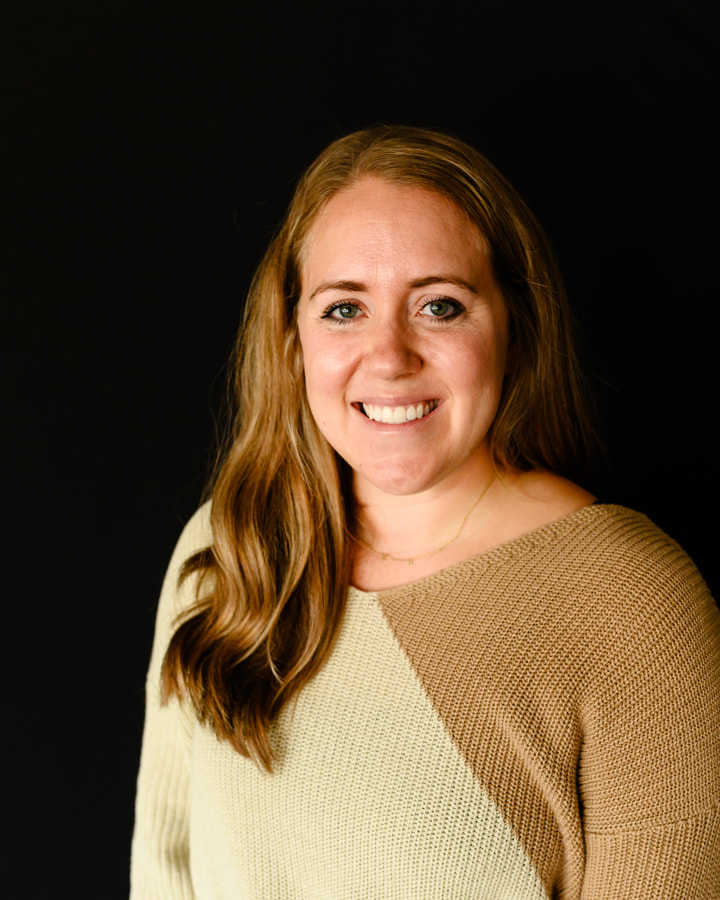
Winners of 2025 Trailblazing STEM Educator Award Announced
Winners of 2025 Trailblazing STEM Educator Award Announced
Challenger Center and AIAA have announced Kelsy Achtenberg, Allan Miller, and Kevin L. Simmons as the winners of the 2025 Trailblazing STEM Educator Award. Each teacher and their respective schools will be awarded $5,000. Additionally, each teacher will receive free access to Challenger Center STEM programming, a trip to Washington, D.C., to be honored at the 2025 AIAA Awards Gala (30 April), and an invitation to attend a future space launch experience and VIP tour.
I
n its fourth year, the award celebrates K-12 teachers who go above and beyond to inspire the next generation of explorers and innovators. The three winners come from schools across the United States and were selected from a competitive pool of nominations. The nominations demonstrate the remarkable efforts teachers make every day to empower underserved and underrepresented students in STEM while using unique strategies, tools, and lessons in and out of the classroom to further energize students.
Each winner can select from Challenger Center’s suite of hands-on, simulated learning experiences based on their classes’ needs: Center Missions, delivered at Challenger Learning Centers around the globe; and Virtual Missions, delivered by Challenger Learning Center Flight Directors to students in and out of the classroom.
Meet The 2025 Trailblazing STEM Educator Award Winners!
Kelsy Achtenberg, STEM coordinator, math lead, and Dean of Students
at The Innovation School, Bismarck, North Dakota
With 13 years of teaching experience, Kelsy has spent the past eight focused on STEM education. During this time, she guided The Innovation School to become a Yass Prize quarterfinalist, a VELA grant recipient, and a Canopy Project school. Her excellence in teaching has earned nominations for Junior Achievement Teacher of the Year, LifeChanger of the Year, Chamber of Commerce Teacher of the Year, and the prestigious Presidential Awards for Excellence in Mathematics and Science Teaching. Holding a Master of Education in Curriculum, Instruction, and Assessment, she crafts innovative, hands-on, project-based lessons. Her commitment to inclusivity in STEM shines through many of her initiatives, including a school makerspace designed specifically for students with dyslexia.
Allan Miller, Applied STEM and Design Technology teacher at Williston Central School, Williston, Vermont
A distinguished educator with 40 years of experience, Allan currently guides 3rd-8th graders through project-based experiences focusing on hands-on STEM activities. He spent 25 years teaching in Alaska, beginning at a Tlingit community school in Yakutat. Now a NASA Solar System Ambassador, Allan has been a Mercury Messenger Fellow and Explorer School Project Leader, and helped establish the Educator Astronaut Teacher corps. His career extends beyond the classroom: as a 1989 Reagan/Gorbachev Fellow, he taught in a Soviet school; as a 2007 Einstein Distinguished Educator Fellow, he coordinated international projects for the National Science Foundation; and as a 2020 Fulbright Distinguished Educator Fellow, he trained over 500 Uzbekistan teachers on STEM education best practices. In 2023 and 2025, he led a Fulbright project in Nha Trang, Vietnam, training faculty and students at a teacher’s college on building problem-solving skills through STEM. His awards include the 2005 Alaska Challenger Center Teacher of the Year, 2008 NSTA Mohling Aerospace Educator Award, and 2013 UVM Tarrant Foundation Educational Leadership Award; he is a 2022 Vermont nominee for the Presidential Award for Excellence in Science and Mathematics.
Kevin L. Simmons, founder of the Wolfpack CubeSat Development Team (WCDT) and Aerospace and Innovation Academy, Palm Beach Gardens, Florida
Kevin brings 21 years of educator experience to engage middle and high school students in aerospace and STEM education. His WCDT program empowers students aged 10–18 to design, build, and launch CubeSats—two have already flown, with a third set for 2025 via Firefly Aerospace’s DREAM 2.0. Under his leadership, WCDT students have produced over 110 technical papers and presented at major conferences such as the International Astronautical Congress and SmallSat. Kevin also works with his team to create educational resources—such as children’s books and podcasts— to make space science accessible to a wider audience. His accolades include induction into the Space Worker Hall of Fame and the AIAA Educator Achievement Award, and he co-found the annual SmallSat Education Conference at NASA Kennedy Space Center. Kevin also is an advocate, mentoring students who have participated in AIAA Congressional Visits Day and Florida Space Day, helping them learn how to advocate for accessible STEM policies and connect with leaders.
Stay Up to Date
Submit your email address to receive the latest industry and Aerospace America news.
